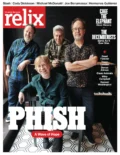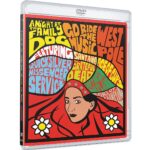True, the marquee names- the Grateful Dead, Santana, Jefferson Airplane, as well as a notable undercard of Steve Miller and Quicksilver Messenger Service- are one’s clear incentives for acquisition of this DVD that compiles together three documentaries filmed just as the 1960s turned into the ‘70s. Yet the force who unites this trio of docs is its maker, renowned music journalist Ralph J. Gleason. It’s Gleason who smartly and presciently recognizes the growing and possibly historic impact of the San Francisco music scene that these films profile, and does so by going directly to the sources- the bands, in performance, and to the street, meeting with the youthful audience that reveres them.
What Gleason gave then, and an essential reason why these three films hold-up over five decades later, is the provision of intellectual integrity and respect the subjects deserved. It’s easy now, with 50 years of hindsight, to appreciate the cultural and artistic contributions of the aforementioned artists, but to spot something in the moment that would endure was a lot trickier. The tendency or temptation for any outside observer of the scene, even one in solidarity with it as the 63-year-old Gleason was at the time, may be to slant the expose’ towards the more altered and counter aspects; a subversive and oddball curiosity, these hippie kids and their pied pipers. Gleason, instead, offers far more gravitas and wisely avoids caricaturizing the participants; still making use of camera angles and filtered imagery consistent with a somewhat expected psychedelic vibe.
It’s a delicate balance, but in the final analysis, Gleason does a terrific job, as if an anthropologist studying this culture and securing some great performances as he does. A Night At The Family Dog zeroes in on the big three- Grateful Dead, Santana, and Jefferson Airplane- with standout takes of “Hard to Handle,” “Soul Sacrifice,” and “Eskimo Blue Day,” respectively. Plus, there is a super jam that gathers three of the more influential guitar players in rock history: Jerry Garcia; Carlos Santana; and Jorma Kaukonen.
Go Ride the Music and Westpole follow a similar layout of performances and contemporaneous explorations of the scene; the former focusing again on Jefferson Airplane more so than others, but featuring some terrific, up-close Quicksilver footage from an outdoor gig. The latter is maybe the most artistically experimental and loose of the three docs- even allowing the Dead to provide their own film- a kind of proto music video for “New Potato Caboose.”
Gleason’s expressed endorsement and support of the San Francisco scene, and his encouragement for others to join in, is abundantly obvious. Even as it wears some obvious marks of the time period, technically and thematically. If the City was, indeed, a Pole of the West, Gleason is its Amundsen.



No Comments comments associated with this post